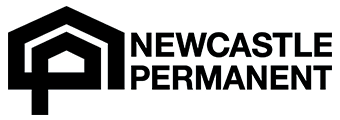Buying a home is likely to be the most expensive purchase of your life. When you’re searching for a home loan, it’s only natural you’ll be focused on what interest rate you’re going to pay but it’s essential you also take a good look at any associated mortgage fees and charges. These can add considerably to the cost of your home loan over time and may not always be obvious.
In a bid to help you avoid bill shock (which can be pretty difficult to avoid when you secure a new home loan anyway), here is a list of the main fees associated with taking out a mortgage:
Upfront or 'establishment' home loan fees
Upfront fees cover the cost of setting up your home loan. You'll have to pay most of them when your loan is approved.
Some lenders may waive certain fees in a bid to win your business but most will charge some sort of upfront fee. Here's a rundown of what upfront fees you might face:
Application fee
- Also called 'set-up fee' or 'start-up cost'
- Charged when you apply for a new loan, refinance, or change loan terms
- Typical cost: $150-$900
Lenders may charge an application fee when you apply for a new loan, access additional funds under an existing loan, or change the terms and conditions of your loan in some way. Application fees can depend on the lender and the amount you plan to borrow.
Property valuation fee
- Covers the lender’s cost of valuing your property
- If the valuation comes in lower than your purchase price, your loan approval could be at risk
- Typical cost: $200–$600 (sometimes free on new loan deals)
This fee covers the lender’s cost to have the home you plan to buy valued by a licensed property valuer before your mortgage is approved. The valuation helps lenders assess whether the amount you are planning to pay for the home reflects what it is worth on the market. Put simply, the lender needs to know how much your property could reasonably fetch if it needed to be sold quickly.
It’s also worth noting you may have difficulty getting the loan approved if the valuation comes in considerably lower than what you were planning to pay for the home. The average cost of a property valuation is between $200-$600 and some lenders may offer free property valuations of part of a new loan deal.
Document preparation fee
- Charged by some lenders to prepare loan docs
- Often bundled with application fees
This additional fee may be listed as a separate charge for some lenders. It covers the cost of preparing the necessary loan documents for your application. Some lenders will include it as part of the establishment or set-up fee.
Legal costs
- Covers the lender’s legal expenses for drafting loan documents
- Typical cost: $200–$450 (sometimes waived)
Some lenders may pass on the legal fees they’ve incurred for preparing your formal loan documents. Legal fees can range from $200-$450, although some lenders may include them within a broader upfront fee or waive them altogether. Bear in mind, the lender’s legal fees are separate from your own legal fees for a solicitor or conveyancing service to facilitate the purchase of your property.
Settlement fees
- Charged for arranging settlement, including balance transfers and title registration
- Typical cost: $100–$900 (may be charged again if you top up or refinance)
Settlement fees may be charged for arranging settlement of your loan, including organising the balance transfer to the seller of the home and the title transfer. Some lenders may include settlement costs as part of their upfront fees.
It’s worth noting some lenders may charge settlement fees again should there be any change to the terms and conditions of your original loan, such as topping up your current loan or should you decide to refinance during the term of your loan.
Lenders Mortgage Insurance (LMI)
- Required if borrowing with a loan-to-value ratio (LVR) above 80%
- Protects the lender if you were to default
- Typical cost: 1% to 5% of loan value (can be thousands)
Use our LMI calculator to estimate your cost.
Many lenders will require you to pay LMI, a one-off insurance policy, if your LVR exceeds 80%. LMI protects a lender's interests should you find yourself unable to service or settle your loan down the track.
LMI can range from 1% to 5% of your home loan amount, depending on your LVR, and can amount to thousands of dollars.
Lenders with no or low upfront fees
The lenders displayed in the table below offer home loans with no upfront fees, application fees, settlement fees, or valuation fees:
| Lender | Home Loan | Interest Rate | Comparison Rate* | Monthly Repayment | Repayment type | Rate Type | Offset | Redraw | Ongoing Fees | Upfront Fees | Max LVR | Lump Sum Repayment | Extra Repayments | Split Loan Option | Tags | Features | Link | Compare | Promoted Product | Disclosure |
|---|---|---|---|---|---|---|---|---|---|---|---|---|---|---|---|---|---|---|---|---|
5.19% p.a. | 5.10% p.a. | $2,742 | Principal & Interest | Variable | $0 | $0 | 80% |
| Disclosure | |||||||||||
5.24% p.a. | 5.28% p.a. | $2,758 | Principal & Interest | Variable | $0 | $0 | 80% | |||||||||||||
5.49% p.a. | 5.49% p.a. | $2,836 | Principal & Interest | Variable | $0 | $0 | 50% |
Ongoing home loan fees
Now that we’ve got upfront fees out of the way, you might also face ongoing fees on your home loan. Again, what you pay will depend on your lender and your particular loan. There are generally two main fees to be aware of.
Monthly home loan fee
- Covers loan administration
- Typical cost: Around $10 per month = $3,600 over 30 years
Some lenders charge a monthly fee that is meant to cover the administration and servicing of your loan. Not all loans come with monthly fees, but a surprising number of lenders still levy them. An average charge is around $10 a month. Although it may seem a relatively small charge, it’s worth considering how much monthly fees can add to the cost of a home loan over its full term. Even $10 a month adds another $3,600 to the cost of your home loan over 30 years.
Annual package fees
- Common with package loans that bundle features (offset accounts, credit cards)
- Typical cost: From $0 to $400 per year
A package home loan is one that combines a mortgage with other banking services, usually a mortgage offset account, a savings or everyday bank account, and sometimes a credit card. One advantage of a package loan is that it may offer an ongoing discount on the interest rate of your home loan as well as the additional benefit of savings on credit card annual fees, for example. In return for the benefits, however, homeowners may have to pay an annual fee, often ranging from a nominal amount to around $400 a year.
Other home loan fees
When you are considering what home loan best suits your needs, it also pays to be aware of other charges that may be incurred along the way.
Switching or break fees
- Charged for breaking a fixed rate loan early or switching loan types
- Costs vary, always check your contract
Break fees may apply if you make a change to the conditions of your original loan, generally switching between a fixed and variable interest rates. A break charge can apply if you choose to exit a fixed home loan early. The fee is designed to cover the cost of what the bank would have received in interest compared to the new deal. There is generally no standard charge for break fees so it’s best to be aware of what fees your lender charges before you sign on the dotted line.
Redraw costs
- Some lenders charge per redraw from extra repayments
- Typical cost: Up to $50 per redraw
Borrowers with a redraw facility on their home loan may be charged a fee when they make a withdrawal from the funds they have built up through extra repayments.
Not all lenders charge redraw fees. Some will grant a set number of free redraws per year while others can charge up to $50 a redraw. It’s worth considering how valuable a redraw facility will be to your circumstances as some lenders may charge higher interest rates for ‘free’ redraws.
Redraw facilities can help borrowers pay off their loans faster but it’s also worth checking whether an offset account may better suit your needs.
Default or late fees
- Applied if you miss a repayment
- Typical cost: $15 to $20 per missed payment
This is a mortgage fee that will apply if there is any time you are unable to meet your minimum home loan repayment by its due date. Fees are often a flat rate – around $15 to $20 – which can be charged until the outstanding amount is paid. Some lenders will extend a short grace period after the due date to allow for extenuating circumstances.
Extra repayment charges
- Usually on fixed loans; may limit extra repayments per year
Some lenders will also charge fees if you make extra repayments not included in the terms of your home loan contract. These extra repayment fees are generally applicable only to fixed rate home loans. Some lenders may allow extra repayments up to a certain sum per year without penalty. Again, it pays to be clear on the specific terms and conditions of your loan.
Exit home loan fees
But wait, there might be more! Even at the end of your home loan, there can still be fees you may not expect. While mortgage exit fees were outlawed on new loans in 2011, loans written before that time may still attract them. Given that loans last for up to 30 years, exit fees may be around for a while yet. There are also a few other end-of-loan charges that may apply:
Discharge fees
- Can be charged when your loan is finalised, refinanced, or the property is sold
- Typical cost: $150–$600 (sometimes up to $1,000)
When you’ve paid off your loan in full, your lender may require you to pay a discharge fee to cover the cost of completing your loan and the paperwork that comes with it. Discharge fees vary from lender to lender and are generally in the range of $150 to $600 but can be as high as $1,000.
There are a number of other scenarios when your mortgage may be discharged including when you sell your property or if you decide to refinance your home loan.
Refinancing fees
- Includes discharge + new application + settlement fees
- Vary widely; always weigh costs vs. benefits
If you decide to switch to a new home loan during the term of your original loan, you will likely be charged refinancing fees. You may be able to negotiate on some costs but generally, refinancing can come with a raft of fees and charges.
Certainly, there are times it pays to refinance a home loan, but the costs and benefits should be carefully weighed. Refinancing costs vary greatly from lender to lender so do your homework to ensure you get the maximum benefit from taking the leap.
Is the comparison rate useful to compare home loans?
By law, the comparison rate is a rate must appear alongside the advertised interest rate on all the home loans you are considering. It represents the total cost of a home loan, with both interest and fees bundled in.
It's based on:
- A $150,000 mortgage
- Over a 25-year term
- Considering typical upfront costs
As such, it pays to keep in mind that the comparison rate may be slightly off kilter when modern home loans are generally for much higher amounts and over 30-year terms. The comparison rate also doesn’t take into account all the fees and charges you may be up for, particularly those ‘other’ fees mentioned above.
Our upfront & ongoing cost calculator can give you a picture of the costs of setting up and servicing a home loan and also takes into accounts other common expenses associated with purchasing a home. Choosing a home loan that best suits your circumstances and future needs can take some research.
Whichever lender and loan you choose, it certainly pays to be on the lookout for associated fees and charges before you get hit with them.
Photo by Jakub Żerdzicki on Unsplash
First published in April 2024
Collections: Loan settlement







Share